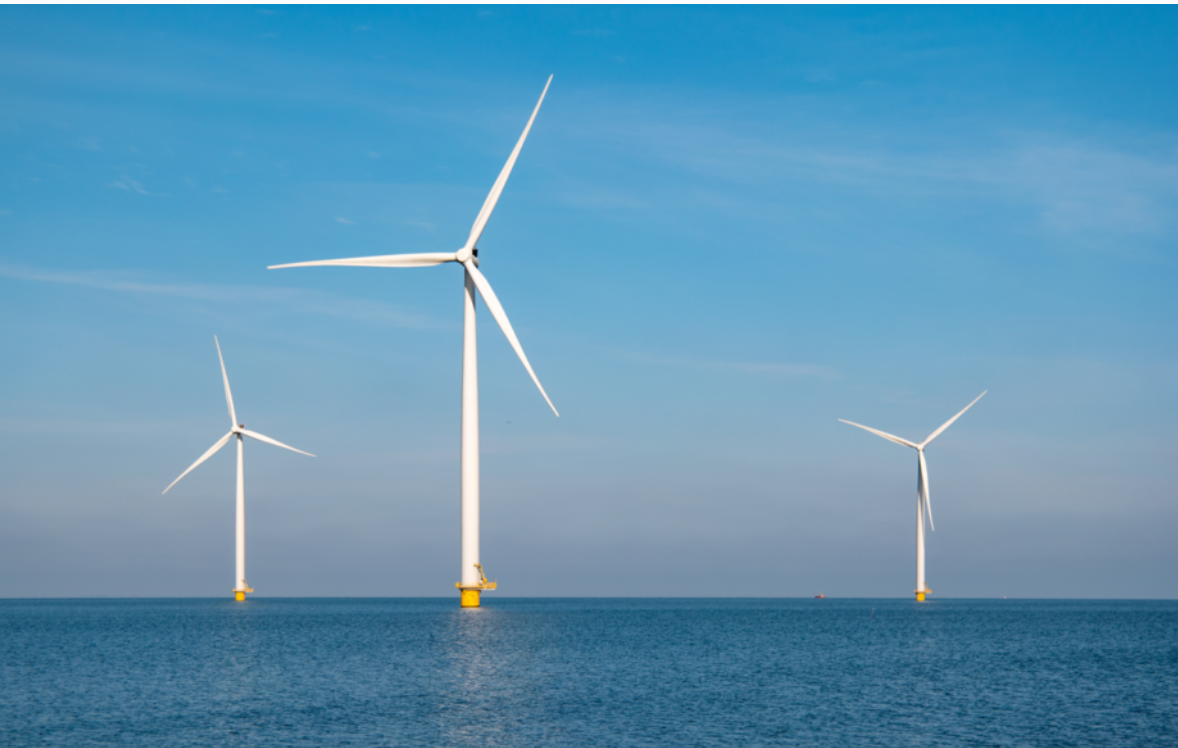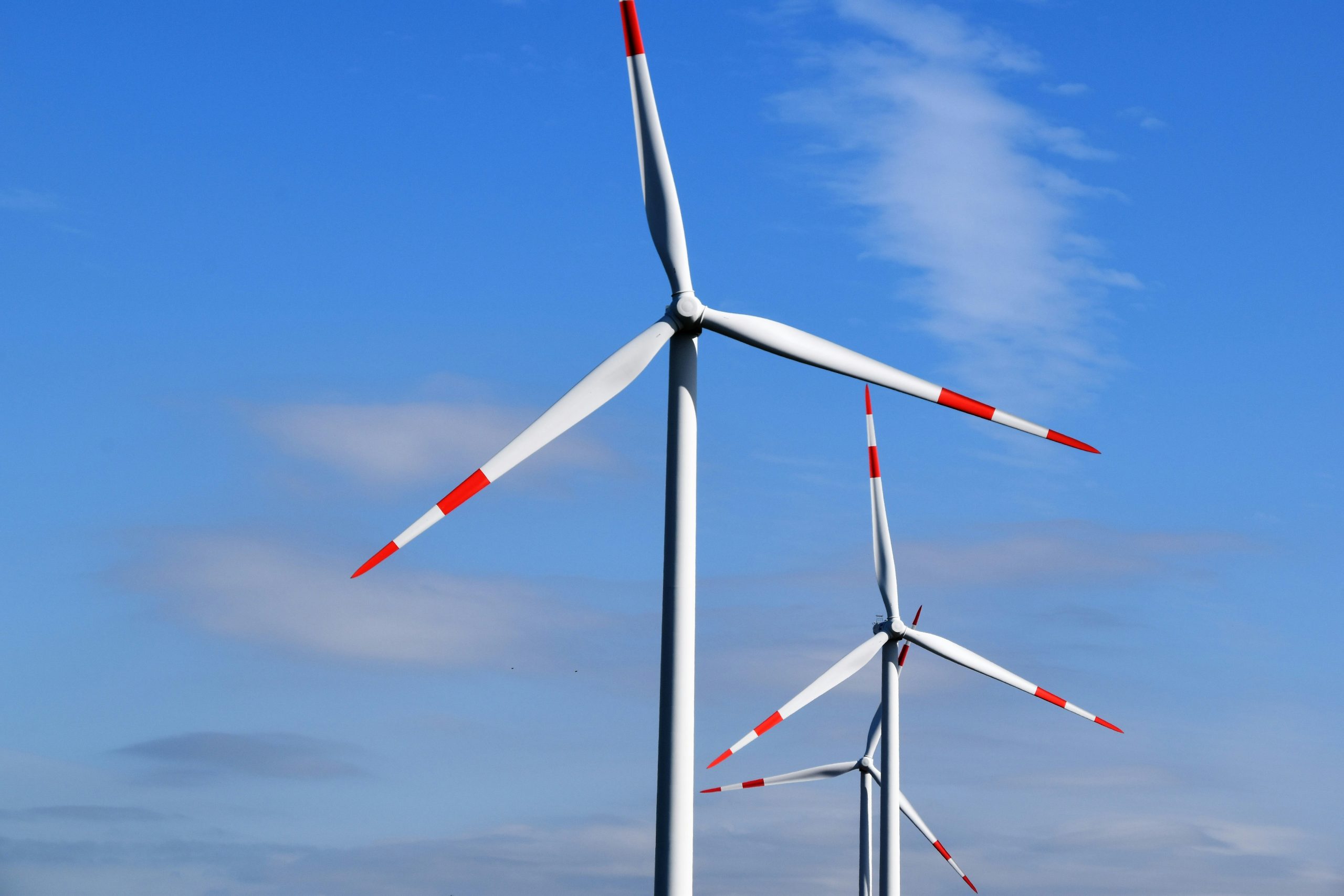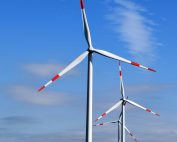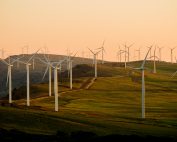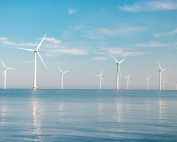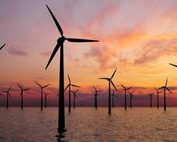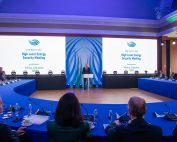The key to increasing the amount of German offshore wind power capacity lies in a compromise approach to land use. This is the main conclusion of an analysis prepared by the Fraunhofer IWES research institute on behalf of the Federal Association of Offshore Wind Farm Operators (BWO) and the German Association of Energy and Water Industries (BDEW).
Wind energy at sea is a crucial element in achieving climate neutrality by 2045. The federal government has therefore formulated the ambitious goal of increasing the installed capacity of offshore wind power from 7,8 gigawatts today to 70 gigawatts by 2045. A new study by the Fraunhofer IWES research institute has calculated in various scenarios that even more than the 70 gigawatts of offshore wind energy planned by the federal government by 2045 could be realized in the German North and Baltic Seas. On the one hand, this requires strategies for a more efficient use of the available space. In addition, the offshore wind power potential can be increased by using additional areas, for example with new offshore wind power technologies, in such a way that other users and important concerns such as nature conservation are not adversely affected. According to the Fraunhofer study, the total potential of offshore wind power in Germany could increase to almost 82 gigawatts. Offshore wind power could thus make an even greater contribution to climate protection and the energy transition.
The scientific study, jointly commissioned by the Federal Association of Wind Farm Operators Offshore (BWO) and the Federal Association of Energy and Water Management (BDEW), has modeled future offshore wind energy potential in the Exclusive Economic Zone (AWZ) of the Federal Republic of Germany using three area settings.
“Of course, when designating new areas, you have to proceed with a sense of proportion,” explains BWO Managing Director Stefan Thimm. “We were particularly pleased to see that all users of the North and Baltic Seas recognize the importance of offshore wind energy and have signaled their willingness to compromise with regard to the shared use of areas. Our goal is a situation in which no type of use emerges as a loser.” A clever combination of developing new areas and increasing the efficiency of areas already used for offshore wind energy generation is therefore important.
“More installed capacity does not automatically mean significantly more energy yield,” says Kerstin Andreae, CEO of BDEW, classifying the results of the study. “In parallel with the development of new areas, we must therefore also keep an eye on area efficiency – i.e. the yield per square kilometer. The study clearly shows that.” A modernization of offshore wind turbines can significantly increase the yield on existing areas, Andreae continues.
“Now at the latest it is clear that the new expansion goals are realistic and feasible – this should also be reflected in the corresponding co-use scenarios in the area development plan,” Andreae and Thimm agree. Which of the identified co-use potentials would then actually be leveraged must be shown in further dialogue with politicians and the relevant interest groups.
The subject of the investigation by Fraunhofer IWES was initially calculations of the yields and efficiencies on the areas available according to the spatial plan. With a dense planning of the wind farm areas of sometimes more than 10 megawatts per square kilometer (MW/km²) corrected power density, the full load hours also fall on average well below the yields in wind farm clusters that are already fully developed today. The use of larger and higher offshore wind turbines will have a positive effect on the yields and efficiencies of the wind farm areas in the future. The latter applies both to new areas and to areas already used for offshore wind energy generation.
In a further step, possible future co-use potentials were analyzed. For this purpose, the Fraunhofer IWES first held discussions with stakeholders from the forms of use nature conservation, fisheries and military. Based on these discussions, an analysis and summary of obstacles and potentials of joint use was carried out. Future technical developments such as floating systems may also at least partially meet the requirements of previous forms of use.
Subsequently, additional scenarios with a higher total installed capacity through co-use were defined and simulated together with the clients. The results of these scenarios show that less dense development in the currently planned areas and relocation of these capacities to co-use areas can lead to a significant increase in full load hours and wind farm efficiencies. In this way, full-load hours could be realized at a similar level as in today’s fully developed clusters, even with further future expansion.
Overall, several co-use scenarios that exceed the federal government’s expansion plans of 70 GW were examined. With a total potential of 81,6 GW of installed capacity, yields of up to 292,1 TWh can be achieved with around 3.580 full-load hours of the wind farms in the German EEZ, according to the results of the investigations.
The full study will be officially presented on September 20 at the BWO Autumn Festival. It will be available on the BWO website.
Source:
